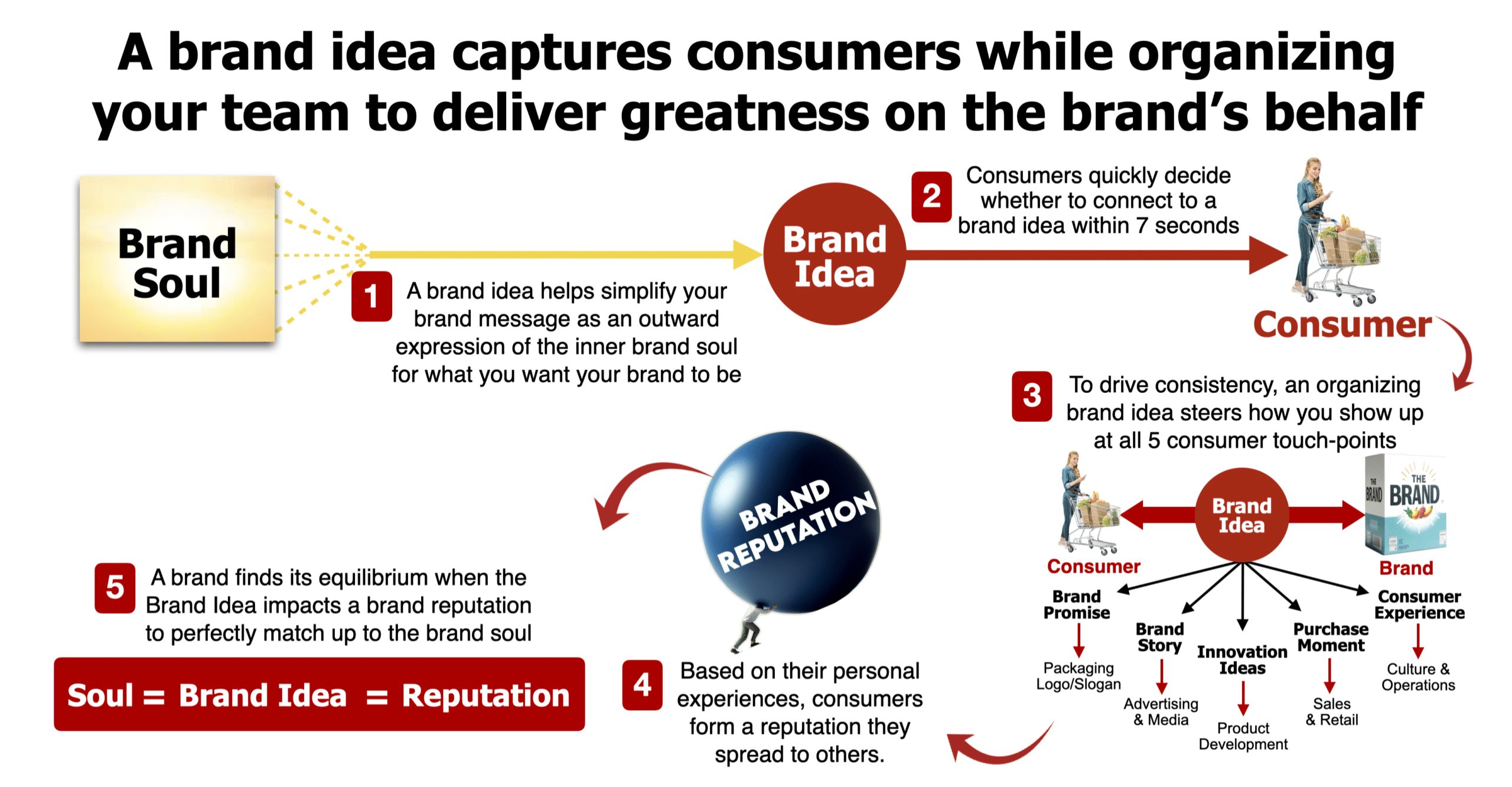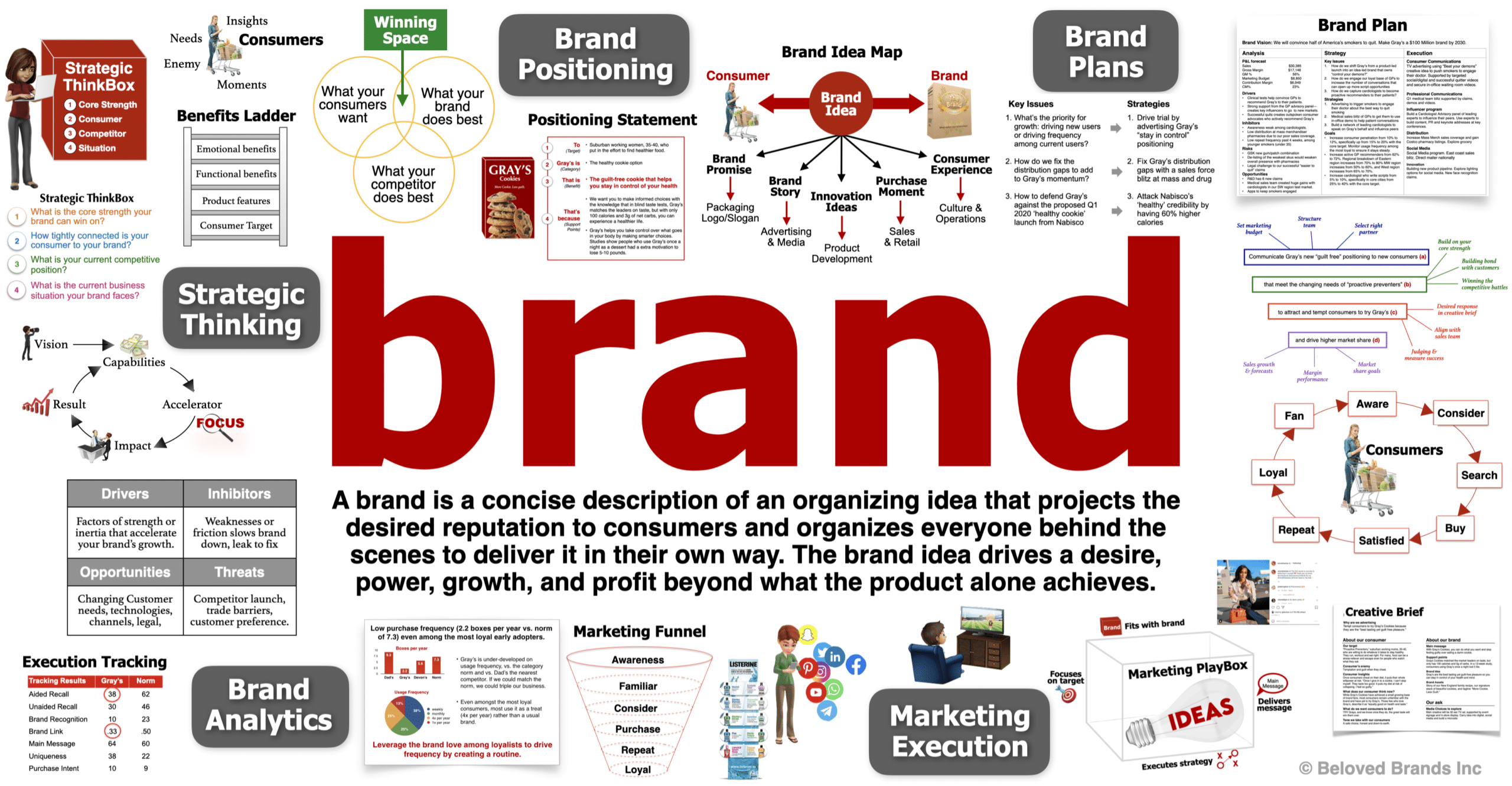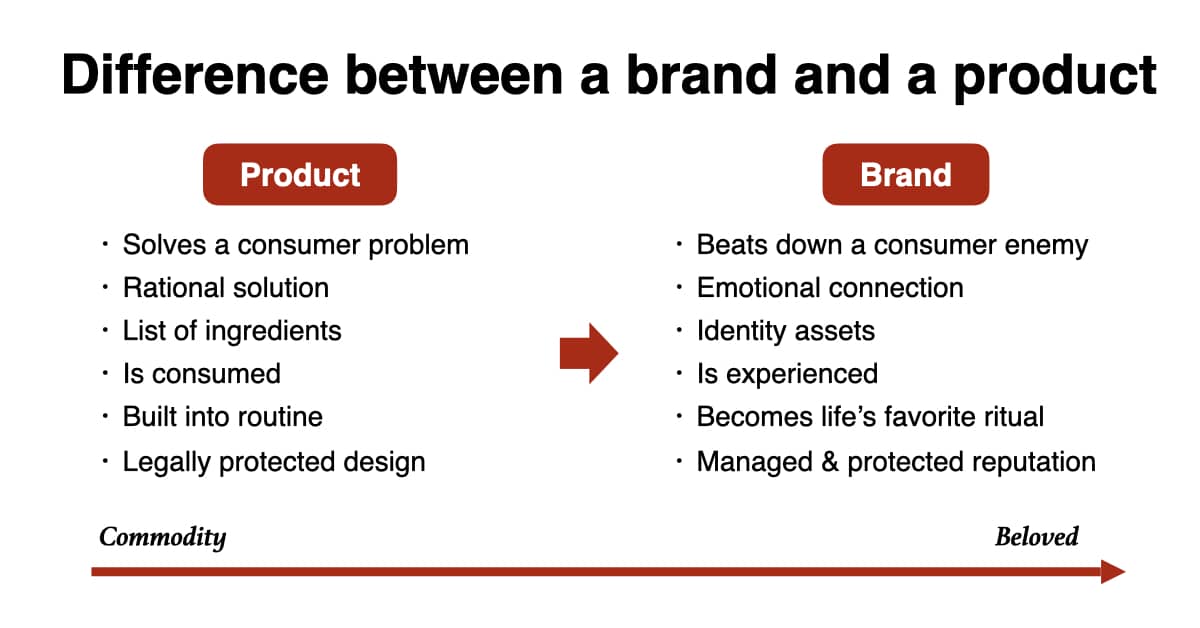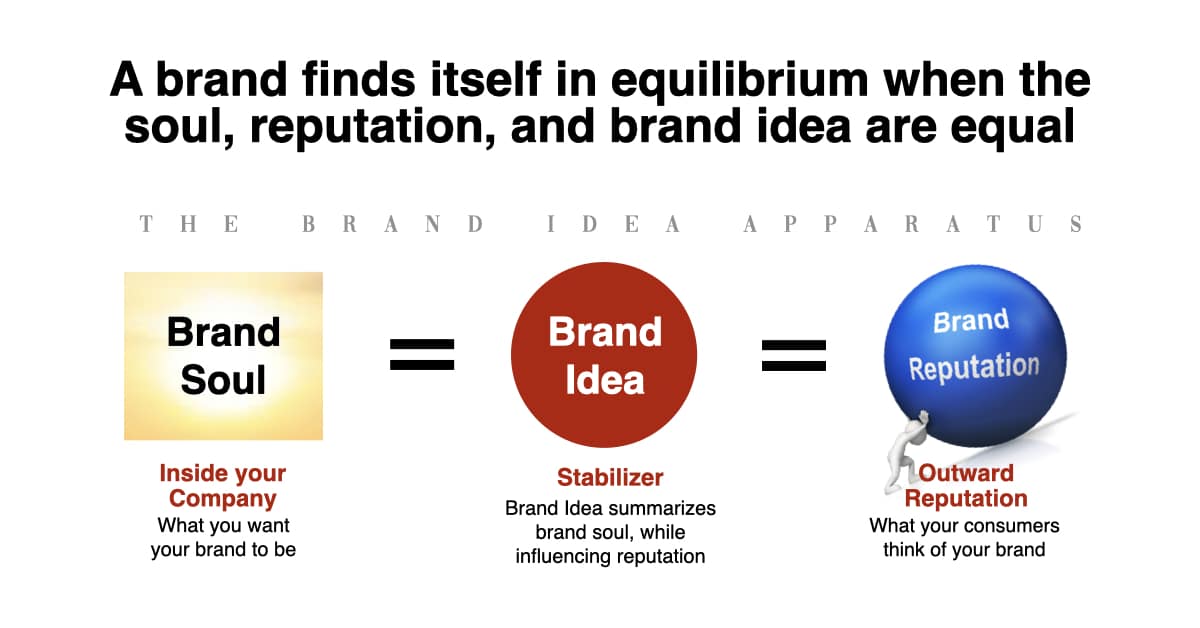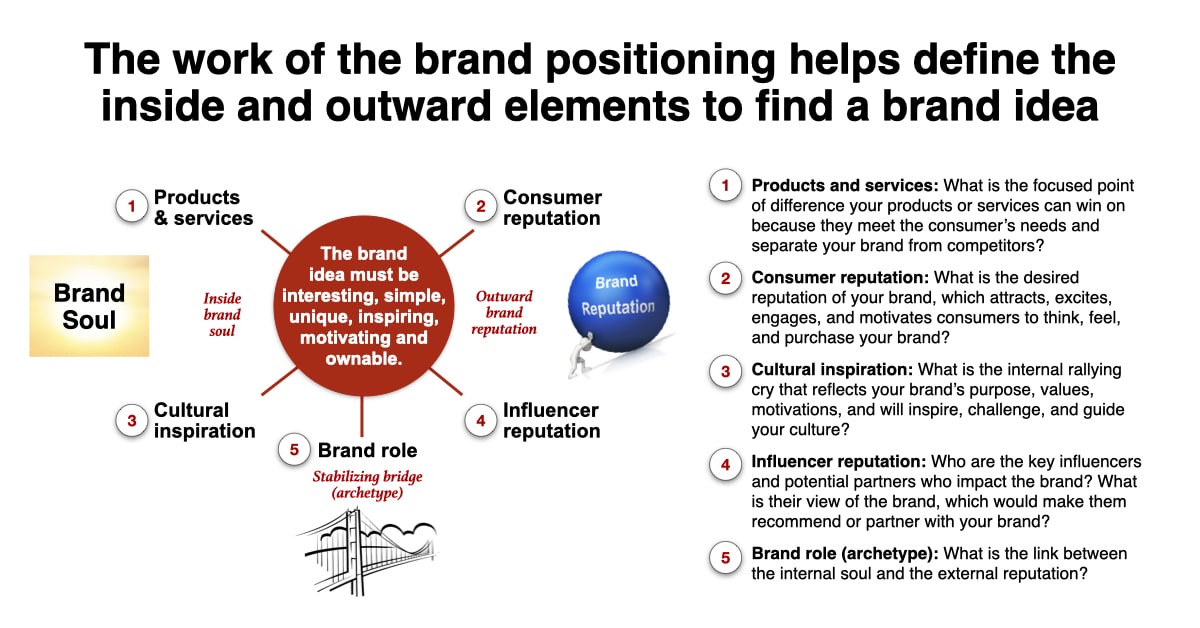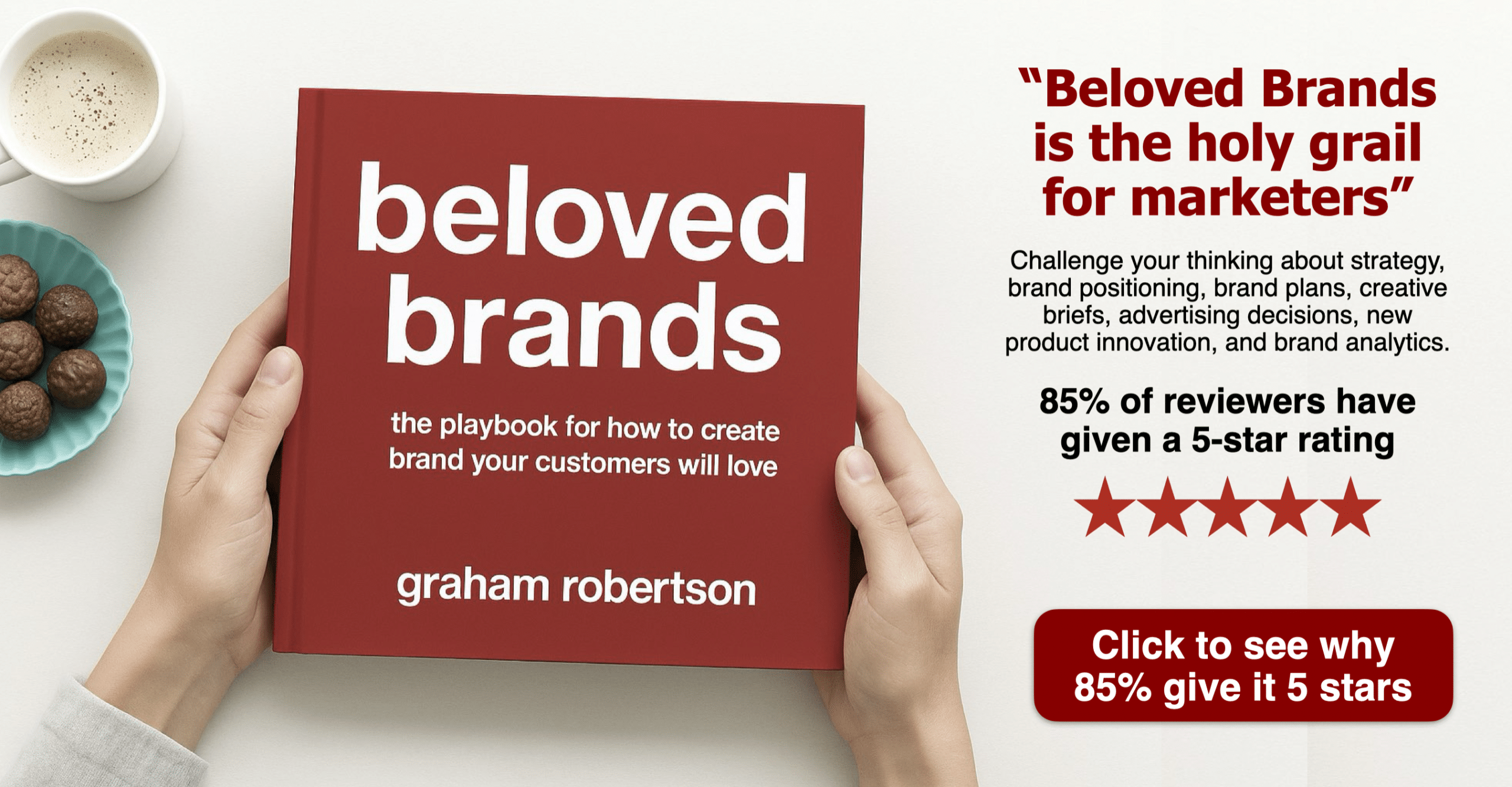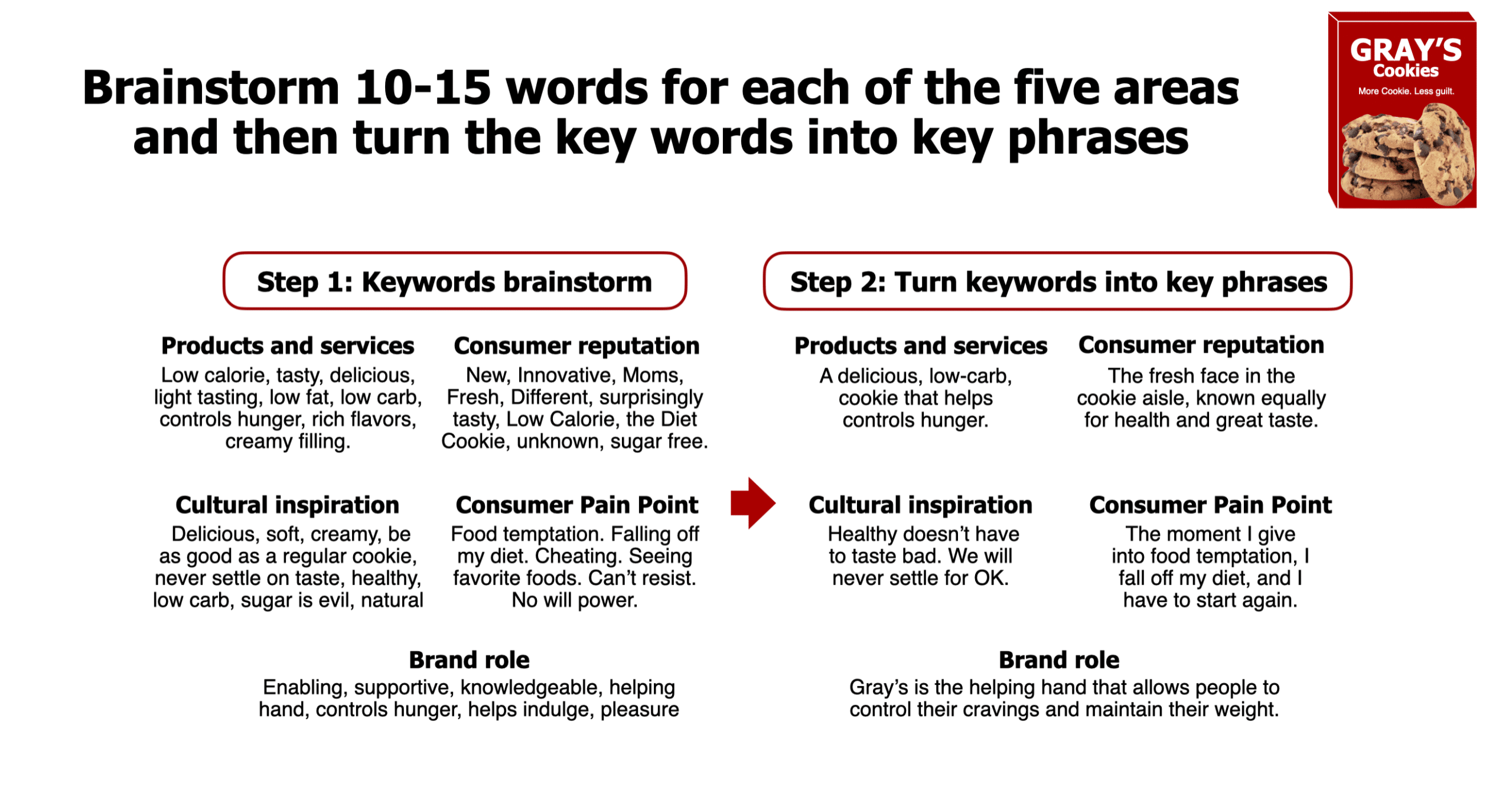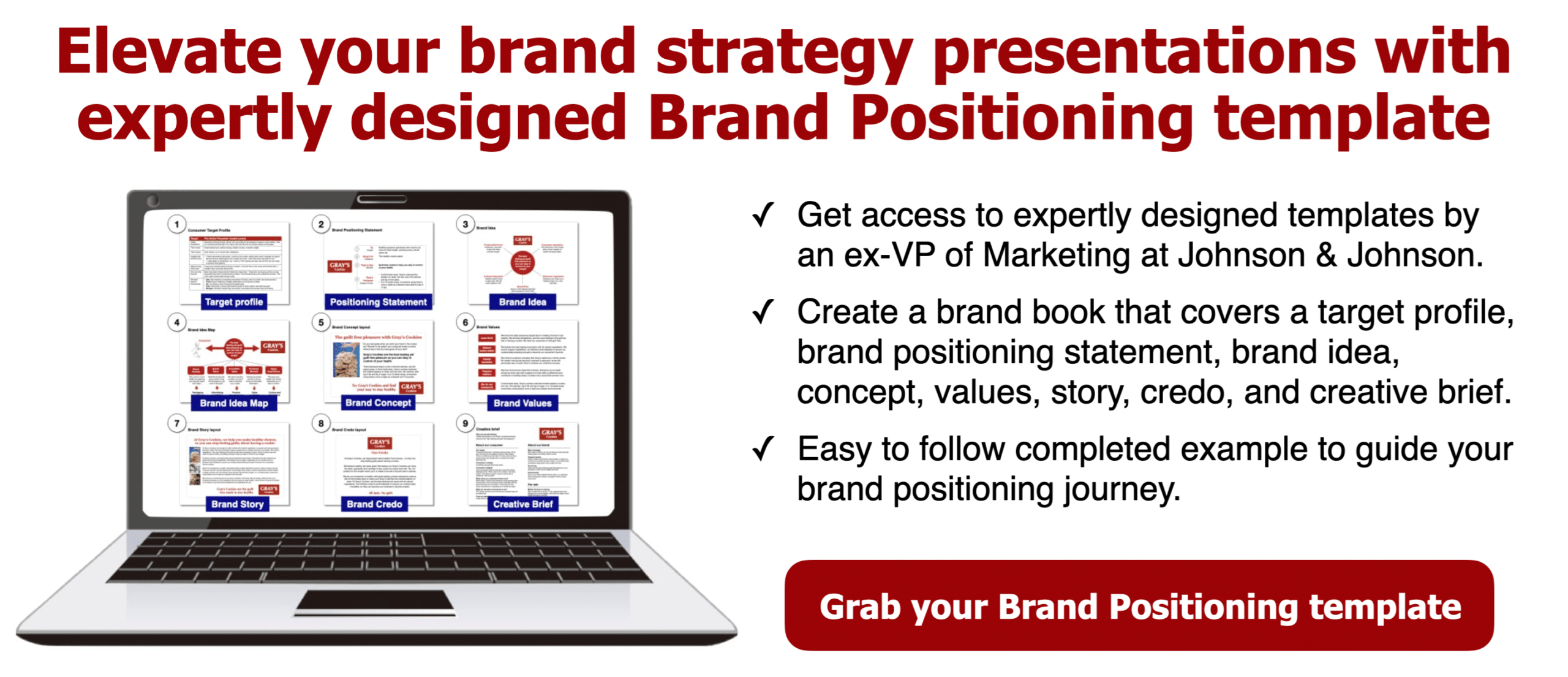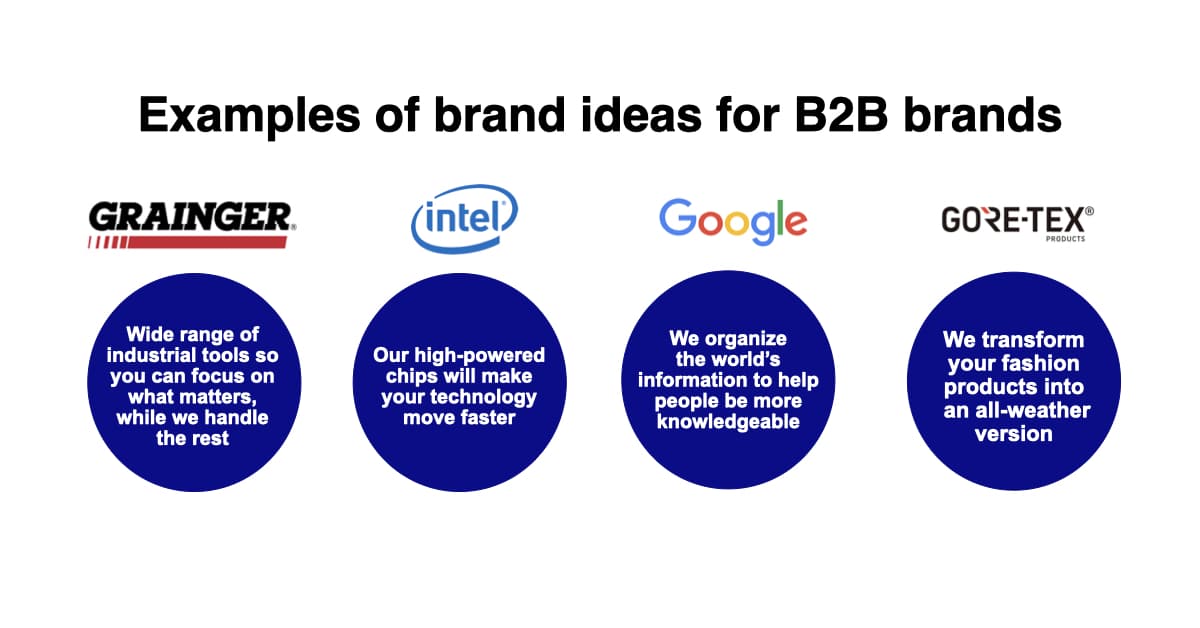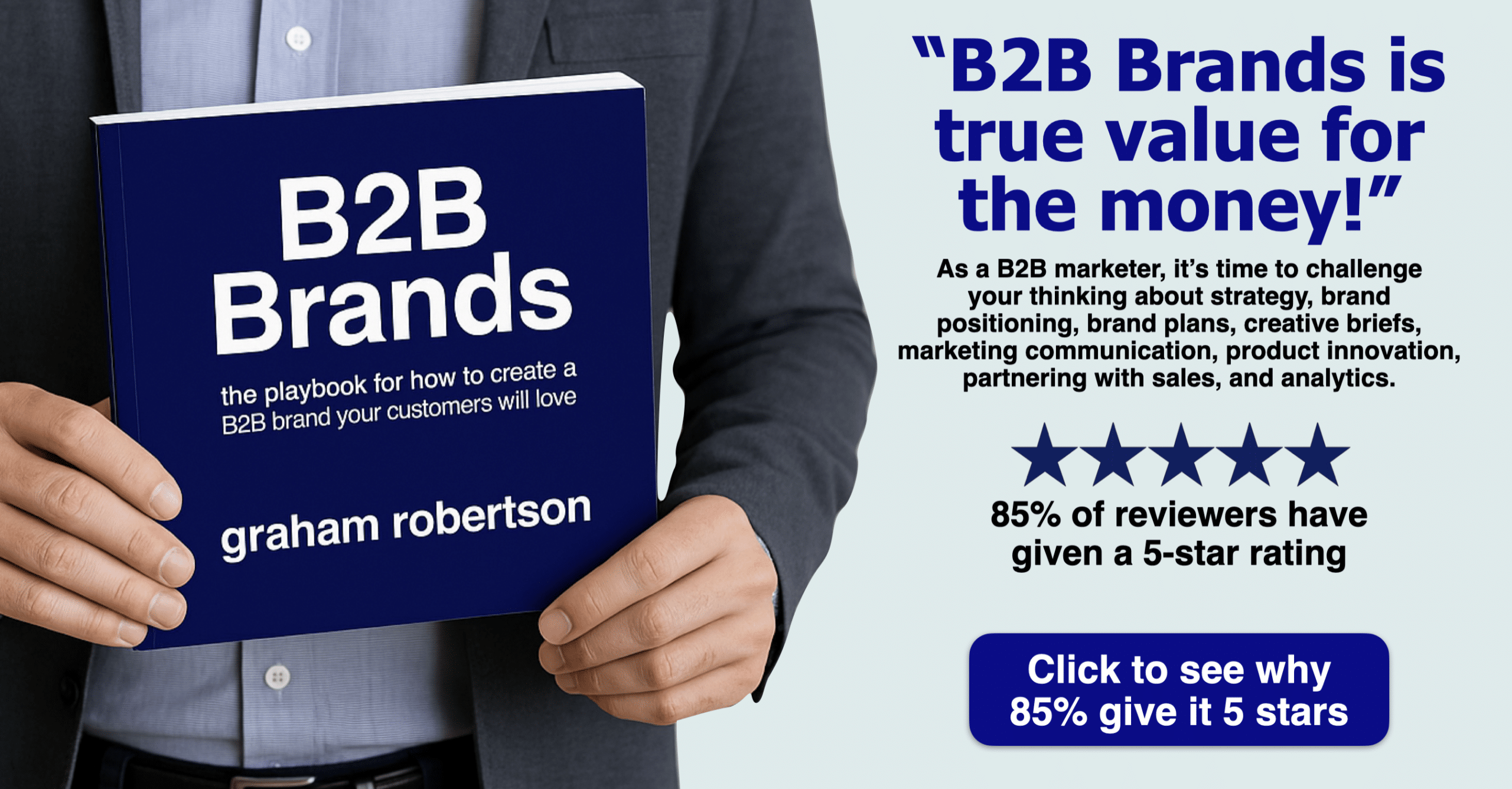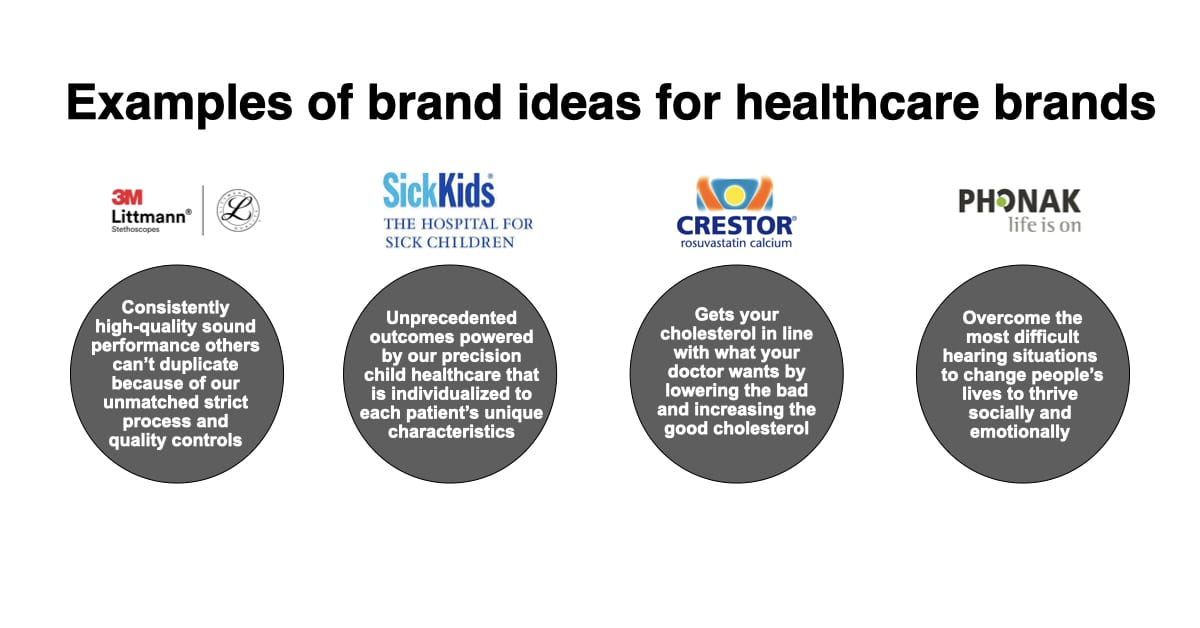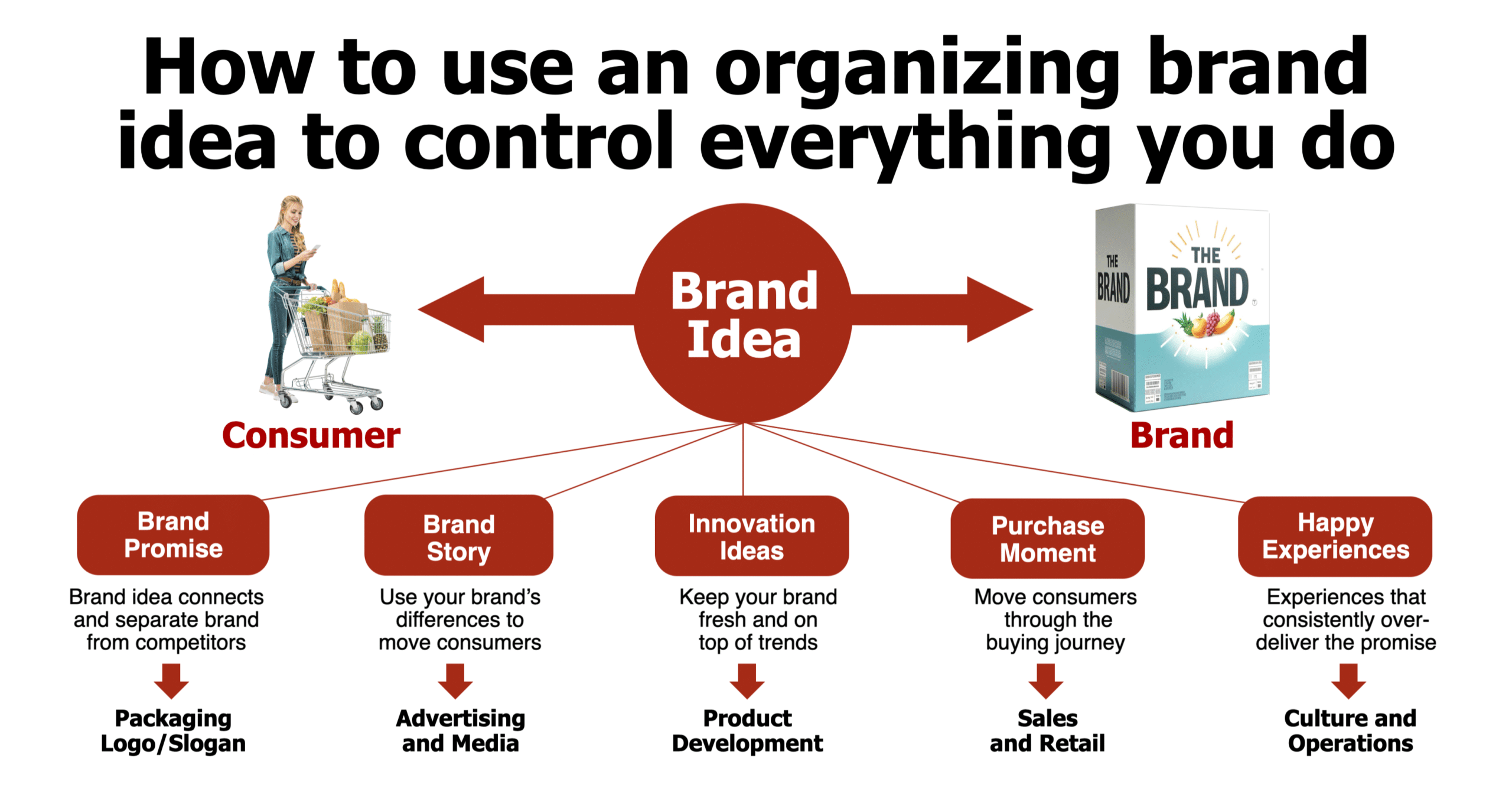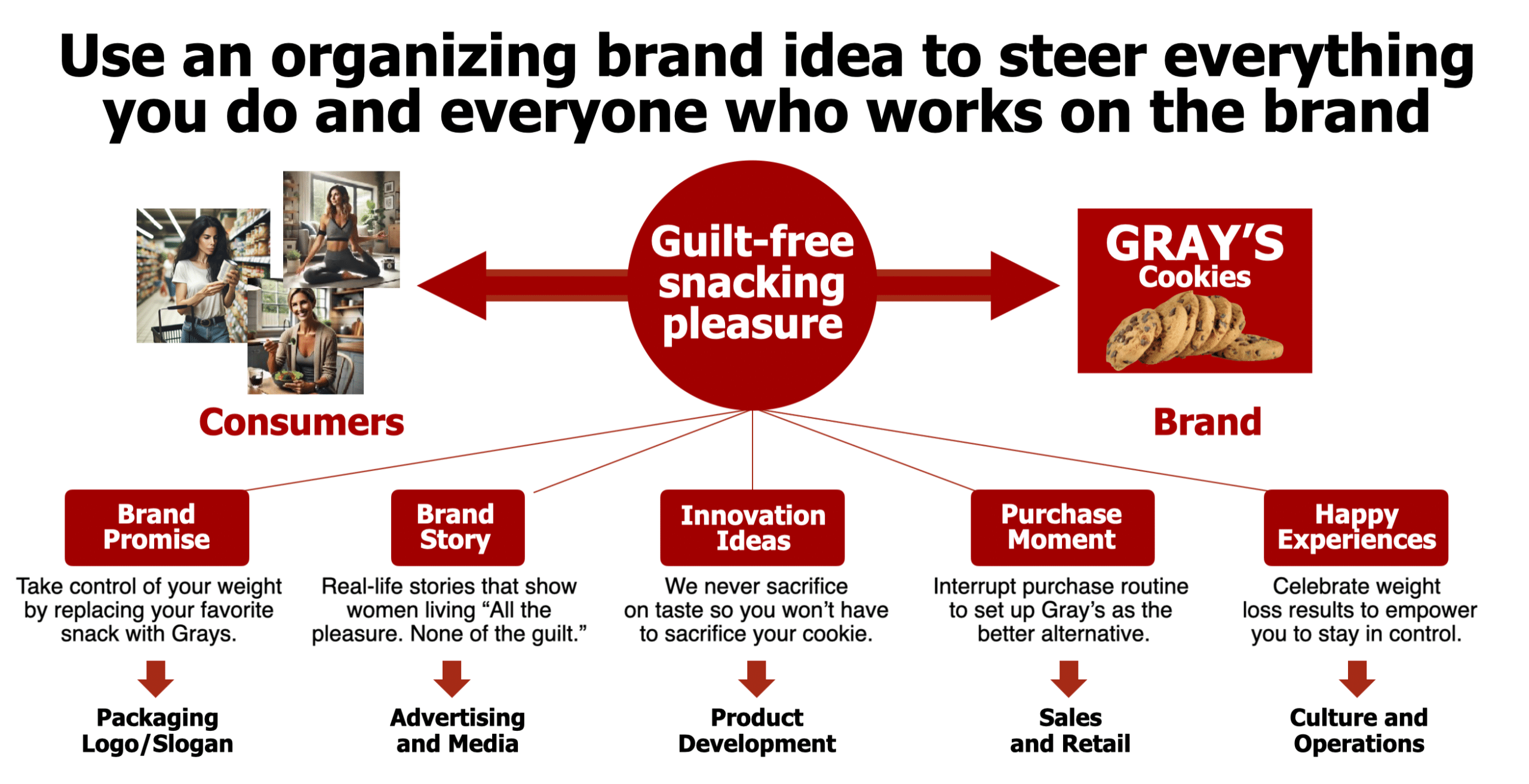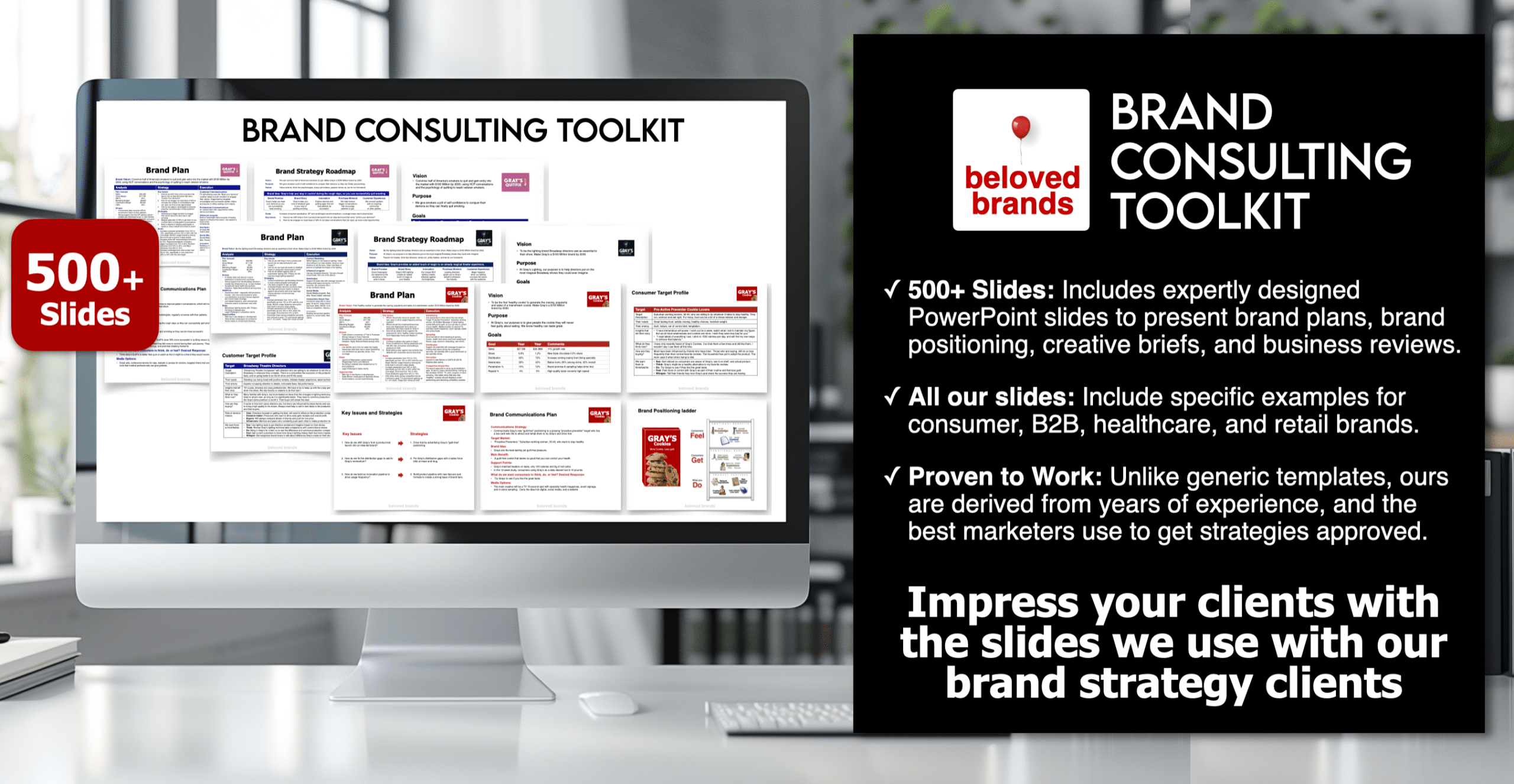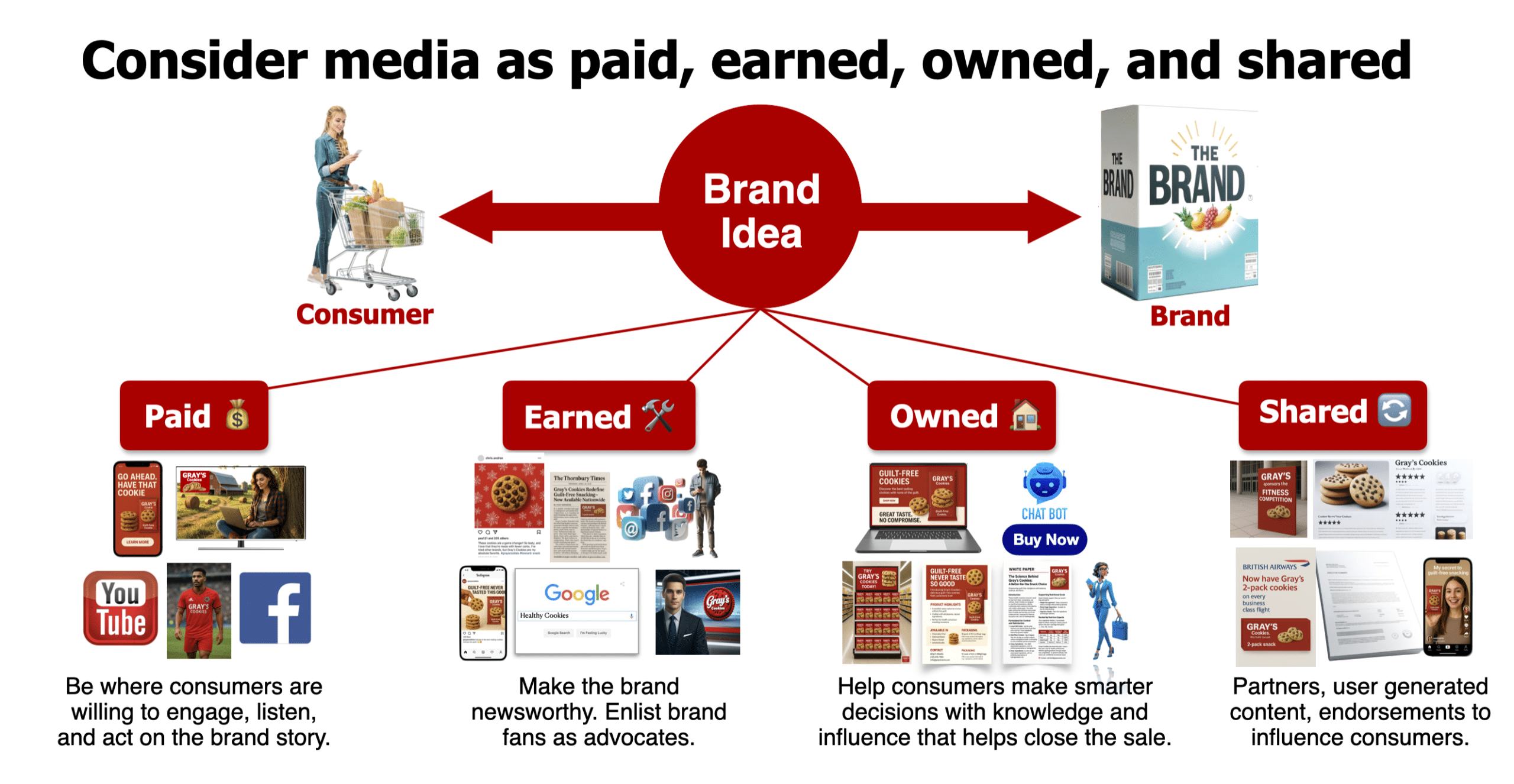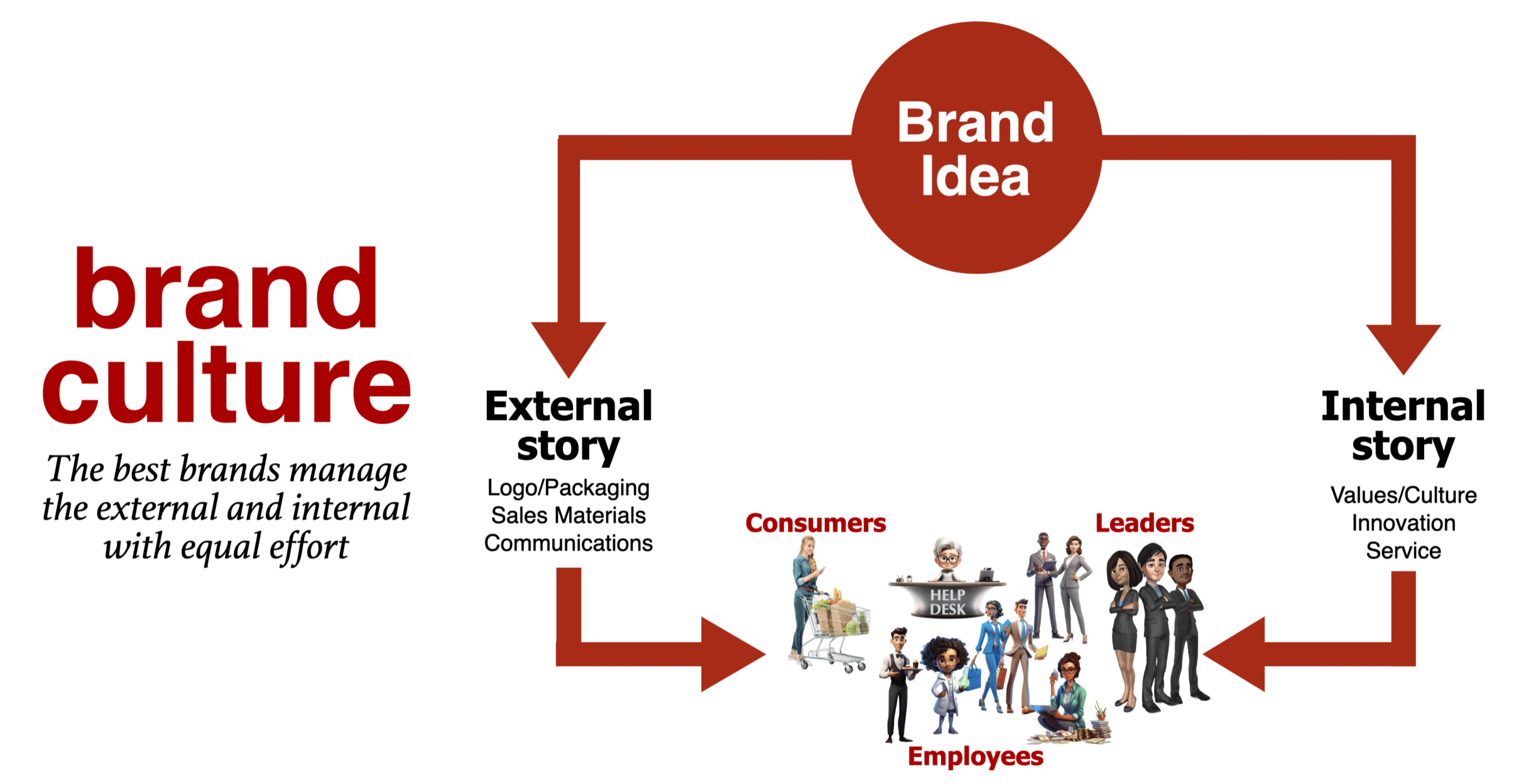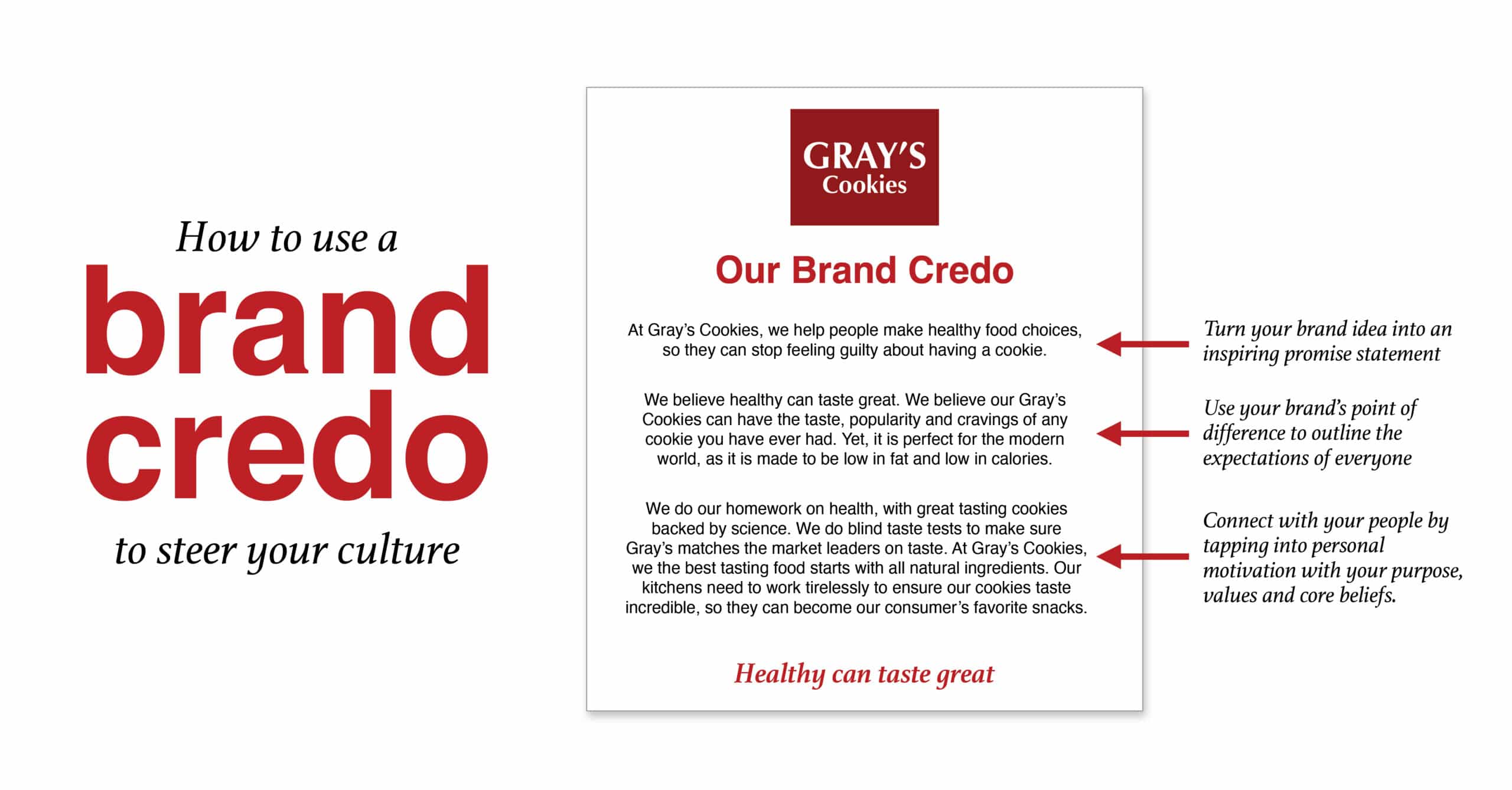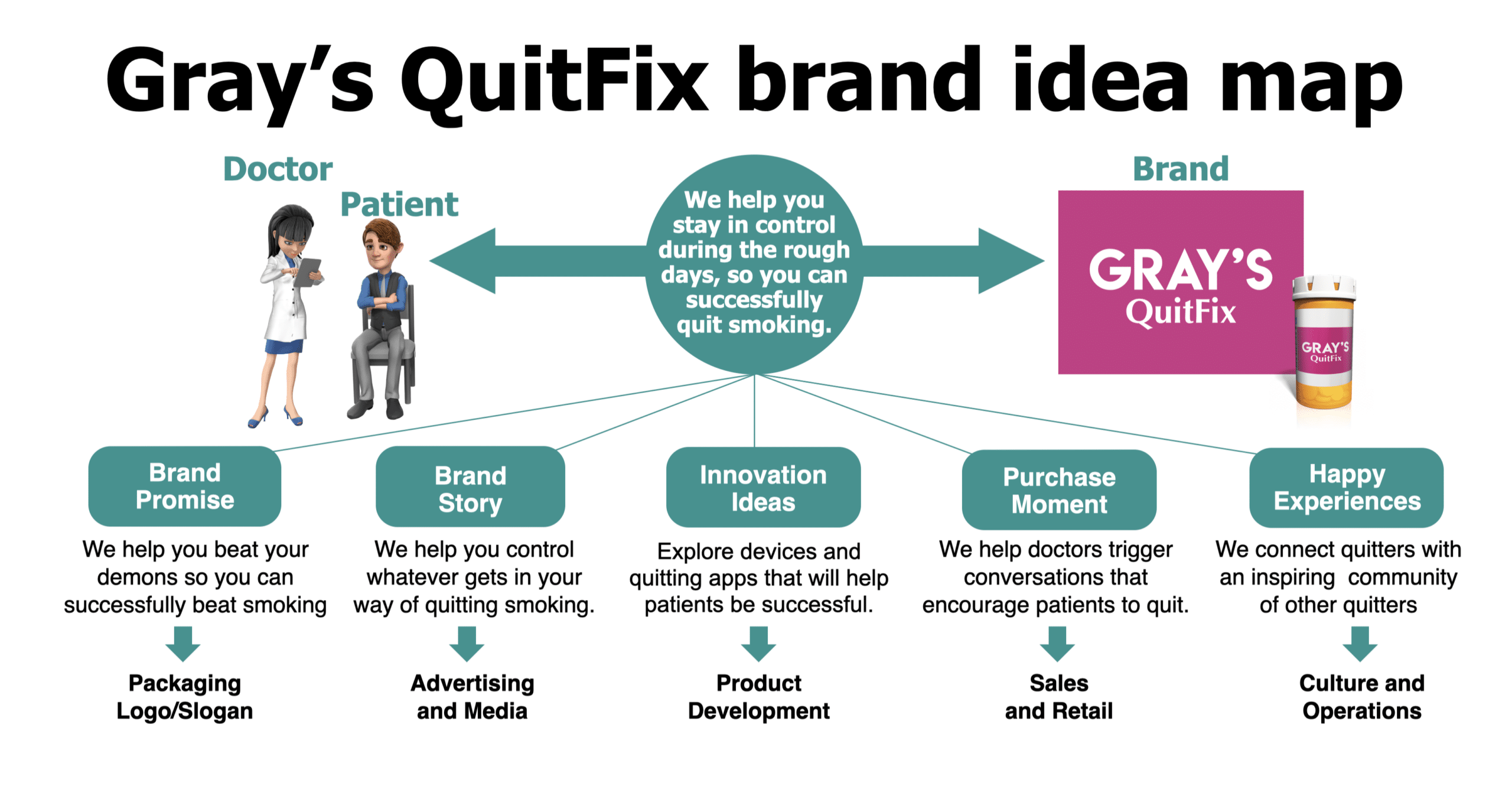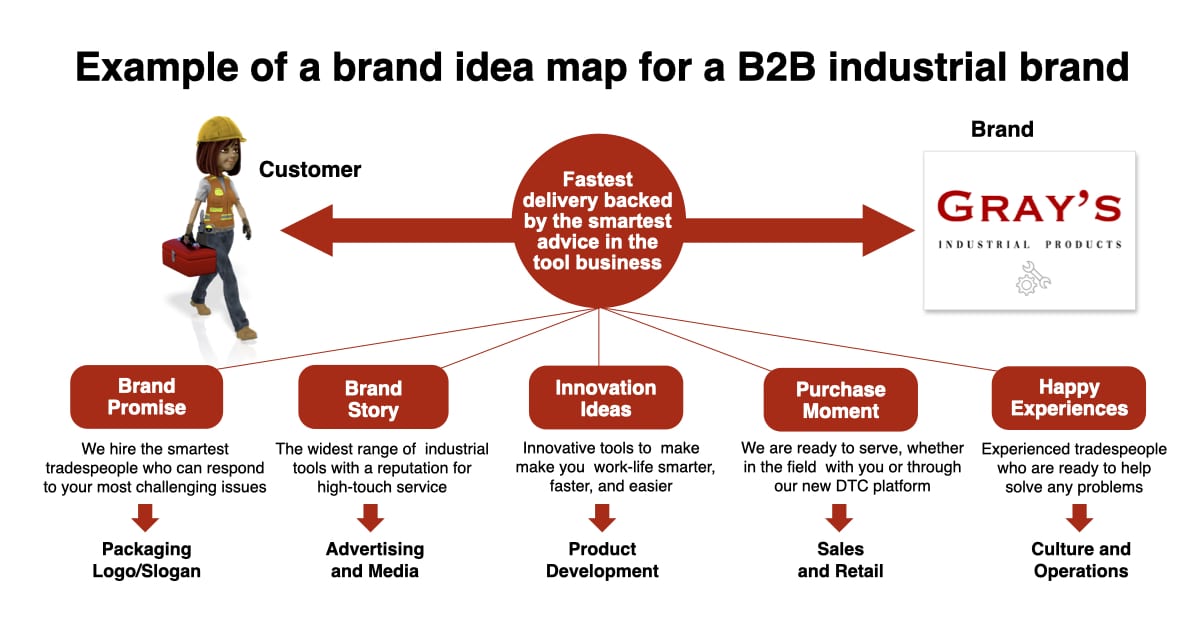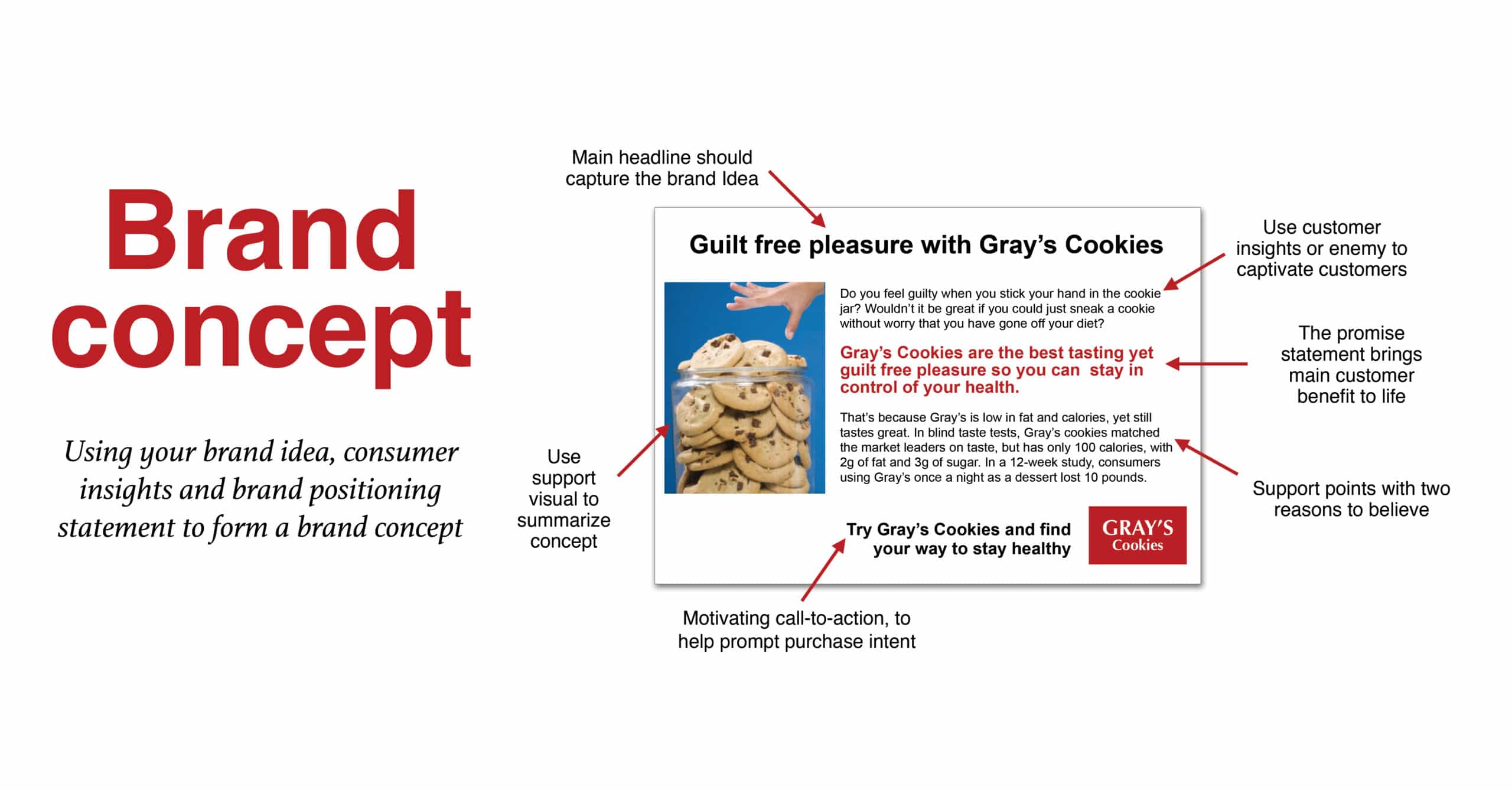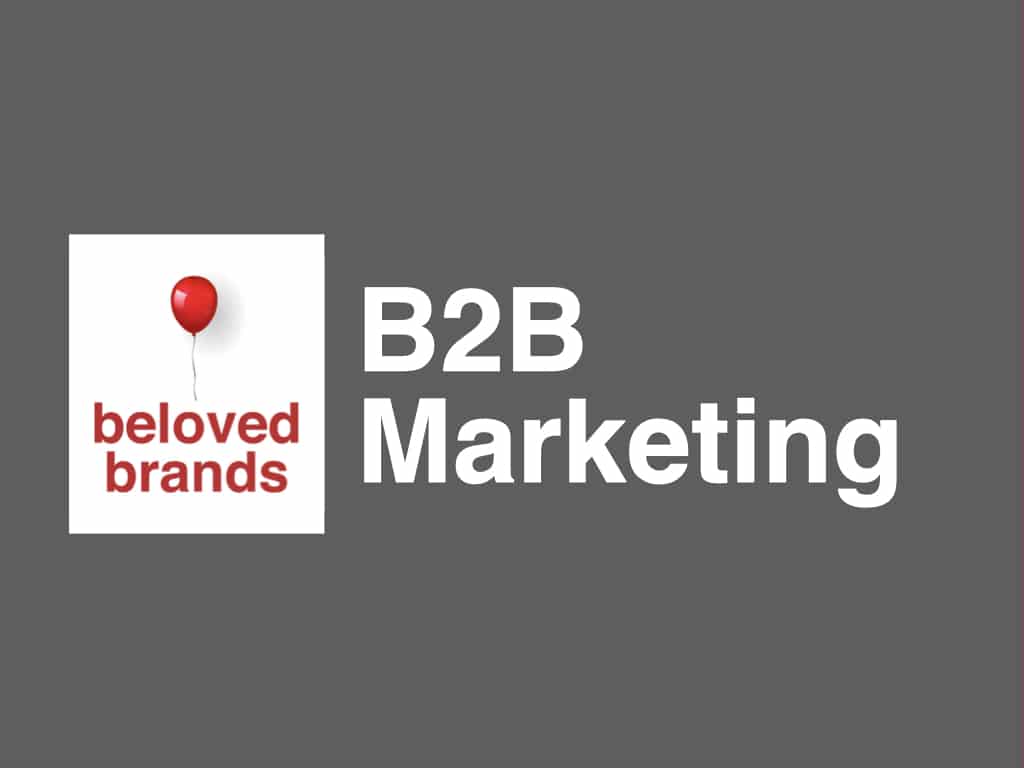Everyone seems to call the short-form description of a brand by different names; brand DNA, big idea, brand essence or shout from the mountain. I keep it simple by calling it the organizing brand idea. Essentially, to win in the marketplace, your brand idea must be interesting, simple, unique, inspiring, motivating, and ownable.
When your brand idea is interesting and simple, it helps the brand gain quick entry into the consumer’s mind, so they will want to engage and learn more about the brand. And, with the consumer being bombarded by 5,000 brand messages every day, the brand only has 7-seconds to connect, or else consumers will move on.
When the brand idea is unique and own-able, it stands out from the clutter, and the brand can see enough potential to build their entire business around the idea. As the idea is motivating to consumers, the brand gains an ability to move consumers to see, think, feel, or act in positive ways that benefit the brand. The marketing fundamentals that we show in this article are part of what we use in our marketing training programs.
An organizing brand idea captures consumers while organizing your team to deliver greatness on the brand’s behalf
An organizing brand idea simplifies everything. It’s not just for the consumer but for everyone who works behind the scenes of the brand. The brand idea represents the inner soul of the brand, but helps project an ideal brand reputation. Our brand idea map helps organize everything and give your brand consistency. To illustrate, click to zoom in.
To illustrate, click on how the organizing brand idea works to align everyone in the company.
Definition of a brand
A brand is a concise description of an idea that projects the desired reputation for a company, products, or services in ways that benefit a business.
The organizing brand idea projects a consistent promise, tells the brand story, showcases innovation, helps consumers at the purchase moment, and delivers satisfying consumer experiences. Over time, the business can use the brand idea to move consumers to see, think, feel, act, and influence others in ways that build a bond with consumers. The brand idea aligns everyone who works on the front line or behind the scenes, so everyone knows their role in adding value to the brand.
A brand is an investment for the business to create a market impact that commands more power and a performance result that drives more profit.
To illustrate, click on how the organizing brand idea works to align everyone in the company.
To illustrate, click on how the idea of a brand shows up beyond the product itself.
As we focus on a brand, you need to get more conceptual. Think about the consumer’s enemy, focus on the emotional benefits, build brand assets, imagine the ideal consumer experience, create rituals for your most loyal consumers, and manage the reputation of the brand.
Defining your brand
Below are four examples of organizing brand ideas that get your brand down to the seven-second brand pitch. Apple is all about “simplicity” while Red Bull owns “extreme” lifestyle. The Starbucks brand builds “moments of escape” around the coffee routine. Tesla is all about the “future.”
To illustrate, click on examples of organizing brand ideas.
The best brands are based on an idea that is easily explained in seven seconds. It helps frame the brand communication, steers new innovation, and helps employees know what they should deliver. To illustrate, click to zoom in.
Brand soul
Use your organizing brand idea to express your inner brand soul
The organizing brand idea must represent the inner brand soul of everyone who works on the brand, inspiring employees to deliver the brand promise and amazing experiences. Finally, the it must be ownable, so no other competitor can infringe on your space, and you can confidently build your brand reputation over time.
To illustrate, click on how the organizing brand idea works to align everyone in the company.
Your brand soul is what you want to be. The brand reputation describes how consumers see you. The organizing brand idea is the stabilizing force that tries to communicate and influence the reputation in the consumer’s mind.
Brand idea blueprint
I created a brand idea blueprint with five ideas that surround it.
On the internal brand soul side, describe the products and services, as well as the cultural inspiration, which is the internal rallying cry to everyone who works on the brand. On the external brand reputation side, define the ideal consumer reputation and the reputation among necessary influencers or partners. The brand role acts as a bridge between the internal and external sides.
- Products and services: First, what is the focused point of difference your products or services can win on because they meet the consumer’s needs and separate your brand from competitors?
- Consumer reputation: Then, what is the desired reputation of your brand, which attracts, excites, engages, and motivates consumers to think, feel, and purchase your brand?
- Cultural inspiration: Next, what is the internal rallying cry that reflects your brand’s purpose, values, and motivations that will inspire, challenge, and guide your culture?
- Influencer reputation: Who are the key influencers and potential partners who impact the brand? What is their view of the brand, which would make them recommend or partner with your brand?
- Brand role (archetype): Finally, what is the link between the internal sound and the external reputation?
To illustrate, click on how the organizing brand idea works to align everyone in the company.
Our model for defining your organizing brand idea looks at five elements.
- First, define the products or services describes what you sell.
- Then, define the consumer reputation which is what you want them to believe.
- Next, look at the cultural inspiration as an internal beacon that steers those who work behind the scenes.
- And, look at the influencer reputation is how key influencers describe the brand.
- Finally, define the brand role is the bridge between the inward and outward view of the brand.
How to find your organizing brand idea
Step 1: Keywords brainstorm for each of the five areas
Start by brainstorming 20-30 words that describe each of the five elements of the brand idea.
Step 2: Turn keywords into key phrases for each of the five areas
Next, get the team to vote to narrow down the list to the best 3-5 words for each section. You will begin to see certain themes and keywords. Take those selected words and build phrases to summarize each section.
To illustrate, click on process of coming up with an organizing brand idea.
Our brand positioning workshops gets leaders to brainstorm 10-20 words for each of the five elements.
Next, narrow down to 3-4 words and write a key phrase. The better the discussions you have, the easier it becomes to see the commonality across all elements. Then, brainstorm the brand idea.
Step 3: Summarize it all to create an organizing brand idea
Once you have phrases for all five areas, the team should feel inspired to use their creative energy to come up with the brand idea. Find a summary statement that captures everything around the circle. Try to get a few different options you can test with both consumers and employees.
To illustrate, click on the Gray’s Cookies organizing brand idea.
Above, in this example for Gray’s Cookies, the common words are healthy, taste, guilt free, and control over your weight. The brand idea “best tasting, yet guilt-free pleasure.” To illustrate, click to zoom in.
The organizing brand idea should steer everyone who works behind the scenes of the brand.
Brand leaders must manage the consistent delivery to every consumer touchpoint. Whether people are in management, customer service, sales, HR, operations, or an outside agency, everyone should be looking to the brand idea to guide and focus their decisions.
With old-school marketing, the brand would advertise on TV to drive awareness and interest, use bright, bold packaging in store with reinforced messages to close the sale. If the product satisfied consumers’ needs, they would repeat and build the brand into their day-to-day routines.
Today’s market is a cluttered mess.
The consumer is bombarded with brand messages all day, and inundated with more information from influencers, friends, experts, critics, and competitors. While the internet makes shopping easier, consumers must now filter out tons of information daily. Moreover, the consumer’s shopping patterns have gone from a simple, linear purchase pattern into complex, cluttered chaos.
Five main touchpoints reach consumers, including the brand promise, brand story, innovation, purchase moment, and consumer experience. Regardless of the order, they reach the consumer; if the brand does not deliver a consistent message, the consumer will be confused and likely shut out that brand. While brands cannot control what order each touchpoint reaches the consumer, they can undoubtedly align each of those touchpoints under the brand idea.
Brand idea map
Use the brand idea to steer everyone who works on the brand
The best brands consistently deliver. Use a cross-functional team, including salespeople, R&D, human resources, finance, and operations. Their participation is one way to gain their buy-in. But that’s not where it stops.
Use your internal brand communications tools to drive a shared definition. Get everyone to articulate how their role delivers the idea. Give the external and internal brand story equal importance to the consumer experience you create for your brand.
To illustrate, click on how the organizing brand idea works to align everyone in the company.
We use our Brand Idea Map to stretch the brand idea across all consumer touchpoints. We include the brand promise, brand story, new product innovation, purchase moment, and the consumer experience.
Brand promise:
Using the brand idea to inspire a simple brand promise separates your brand from competitors. Essentially, position your brand as better, different, or cheaper.
Brand story:
When you use a brand story to bring the brand idea to life, it helps motivate consumers to think, feel, or act while it works and establishes the ideal brand’s reputation to be held in the minds and hearts of the consumer. Above all, the brand story aligns all brand communications across all media options.
Innovation:
Using the brand idea to build a fundamentally sound product helps stay at the forefront of trends and technology to deliver innovation. Furthermore, steer the product development teams to ensure they remain true to the brand idea.
Purchase moment:
Using the brand idea to move consumers along the purchase journey to the final purchase decision helps align the sales team and set up retail channels.
Consumer experience:
Finally, turn the usage into a consumer experience that becomes a ritual and favorite part of the consumer’s day. As a result, the brand idea guides the culture of everyone behind the brand who delivers the experience.
Example of a brand idea map
Below, we use our Brand Idea Map to stretch Gray’s Cookies’ “guilt free” brand idea across all consumer touchpoints.
To illustrate, click on how the organizing brand idea works to align everyone in the company.
Delivering the organizing brand idea
Use the organizing brand idea to align every media choice
This process allows you to make creative and media decisions together. You will see the ads in context to figure out the best combinations for your brand. Also, you will be able to see the possible breadth of each creative idea, which can provide a clue to the campaign’s longevity. In today’s cluttered media world, the brand idea should help organize all four types of media, including paid, earned, shared, and owned.
To illustrate, click on how the organizing brand idea works to align everyone in the company.
To read how the brand idea can steer every type of media, whether paid, earned, shared, or owned, click here.
Let the organizing brand idea drive the organization culture behind the brand
Your organizing brand idea should steer the internal culture to inspire and steer everyone who works behind the scenes of the brand. Brand leaders must manage the consistent delivery of the brand idea over every consumer touchpoint. Everyone should be looking to the brand idea to guide and focus their decisions. Most importantly, companies need to focus on their internal brand, to make sure management, customer service, sales, HR, operations, or an outside agency are all moving in the same direction.
To illustrate, click on how the organizing brand idea works to align everyone in the company.
Brand credo
Build a brand credo document
Having spent time at Johnson & Johnson, I was lucky to see how their credo document has become an essential part of the culture of the organization. Not only does it permeate throughout the company but you will also likely hear it quoted in meetings on a daily basis. It is a beautifully written document and ahead of its time.
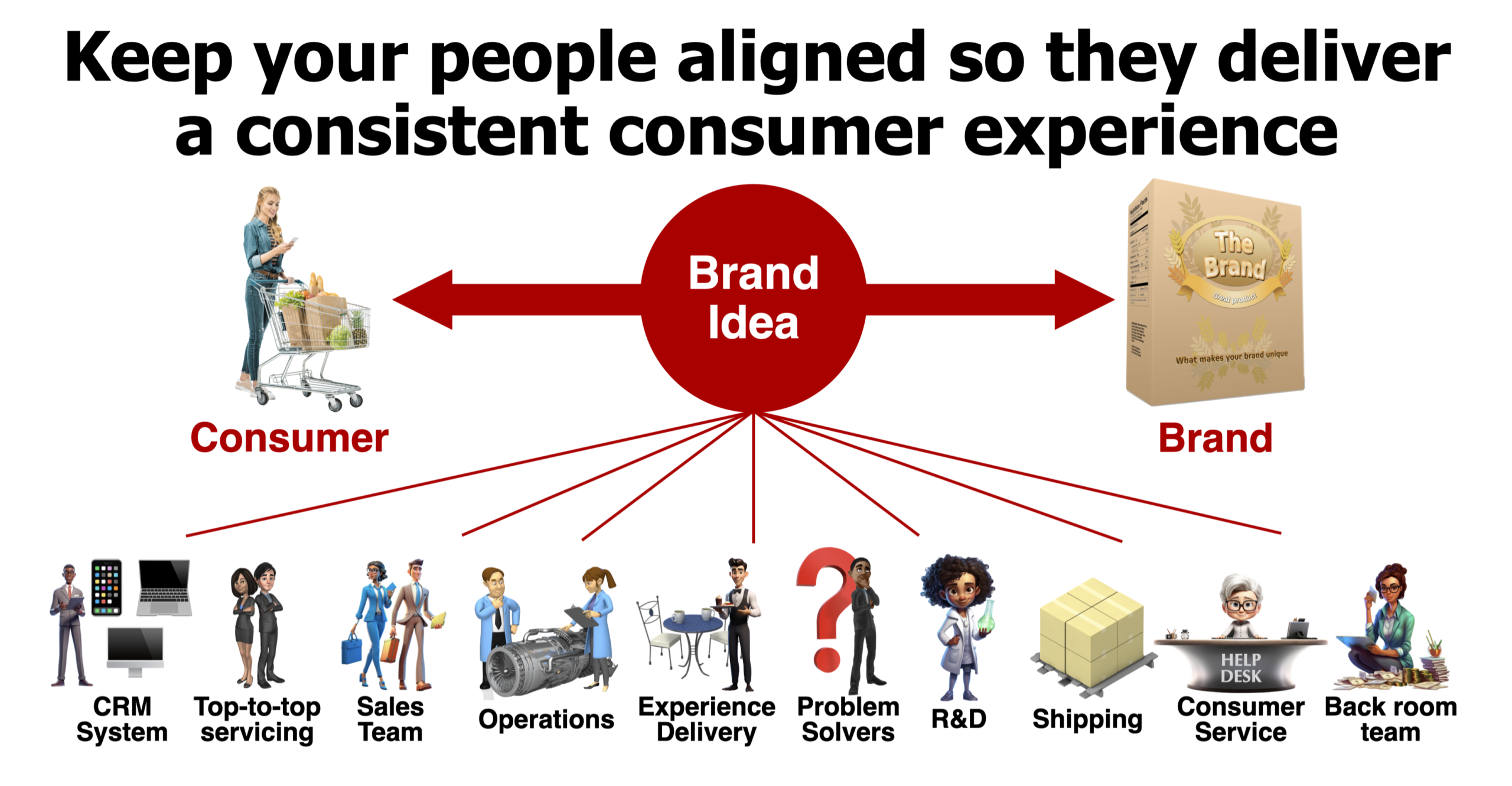
Our Brand Idea Map helps communicate across the organization to ensure everyone knows how have deliver. Build the organizing brand idea into their performance review.
Brand idea examples
We use our organizing brand idea map to stretch Apple’s “simplicity” brand idea across all consumer touchpoints. And, we include the brand promise, brand store, new product innovation, purchase moment, and the consumer experience.

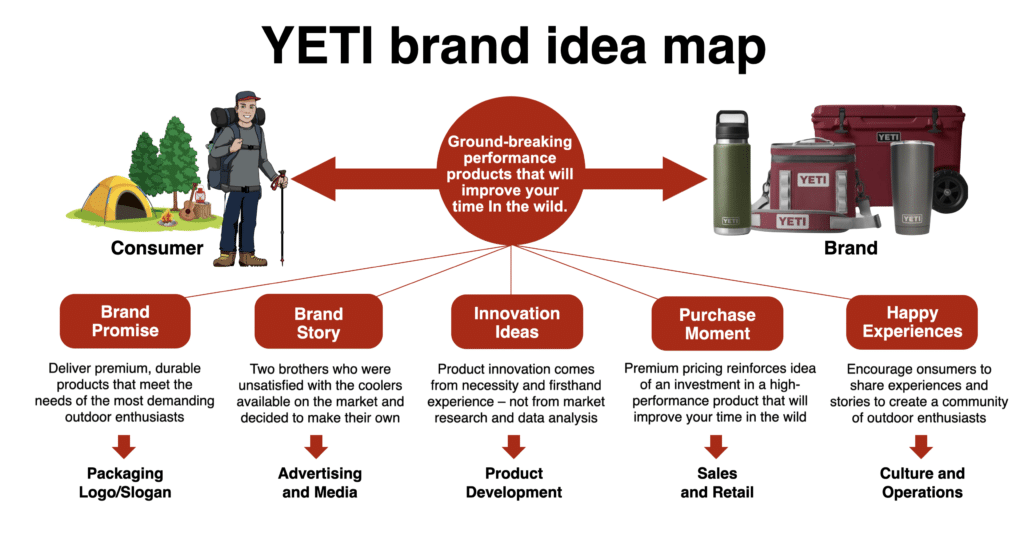
We use our Brand Idea Map to stretch Gray’s Lighting “added touch of magic” brand idea across all customer touchpoints. And, we include the brand promise, brand store, new product innovation, purchase moment, and the customer experience. To illustrate, click to zoom in.
We use our Brand Idea Map to stretch Gray’s QuitFix “stay in control” organizing brand idea across all touchpoints that reach both HCPs and patients. And, we include the brand promise, brand store, new product innovation, purchase moment, and the consumer experience. To illustrate, click to zoom in.
We use our Brand Idea Map to stretch Gray’s Mobility “helping hand” brand idea across all touchpoints that reach physiotherapists, the patient, and the adult child who buys the products. Also, we include the brand promise, brand store, new product innovation, purchase moment, and happy experiences. To illustrate, click to zoom in.
Brand concept
Build your marketing skills with how to write a Brand Concept
One of the most important skills marketers need to know is the fundamentals of writing a brand concept. Read our step-by-step process for how to create a brand concept that brings your brand to life. Learn how to lay out the brand concept with the organizing brand idea, consumer insights, main message, support points and call-to-action.
What type of marketer are you?
Marketers learn best when they see our marketing concepts applied to brands that look like theirs. Moreover, we have developed specific examples – consumer, B2B, and healthcare – to showcase our marketing tools. Click on the icon below to choose your interest area.


